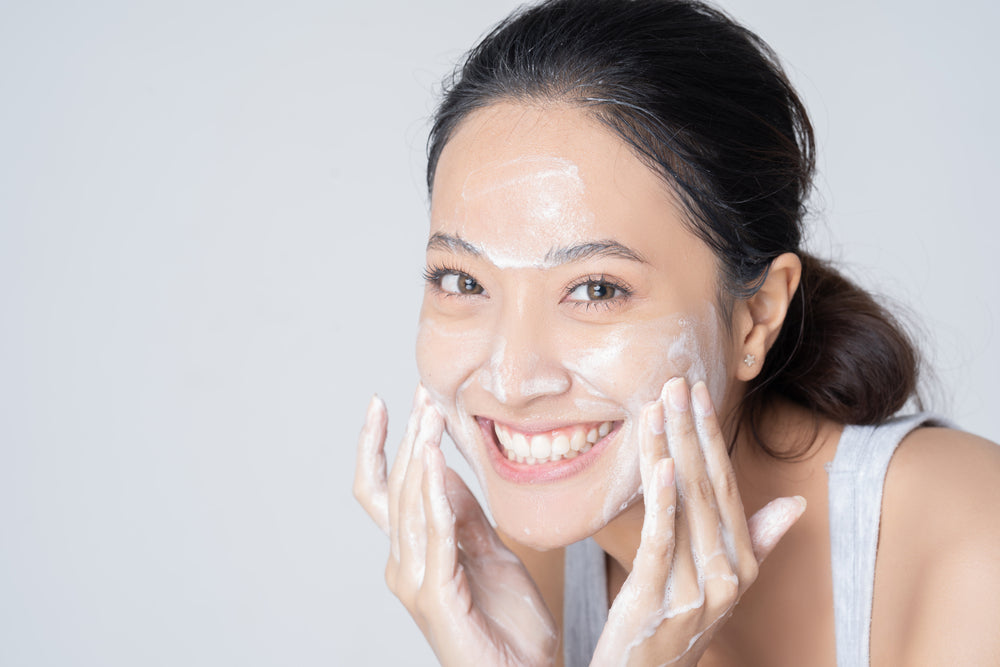
How To Properly Exfoliate Your Face For Each Skin Type
Exfoliating your face is a crucial step in any skincare routine, but it's essential to do it properly to avoid irritation and achieve the best results. In this guide, we'll explore the benefits of exfoliation, discuss the different types of exfoliators, and provide recommendations on how to exfoliate your face based on your skin type.
The Benefits of Exfoliating Your Face
Exfoliating your face removes dead skin cells from the surface, revealing smoother, brighter skin underneath. This process offers several benefits, including:
- Improves Skin Texture: Regular exfoliation helps to smooth rough patches and refine the skin's texture, resulting in a more even complexion.
- Unclogs Pores: Exfoliating helps to remove dirt, oil, and debris from pores, reducing the risk of breakouts and blackheads.
- Enhances Product Absorption: By removing dead skin cells, exfoliation allows skincare products to penetrate more deeply into the skin, maximizing their effectiveness.
- Stimulates Cell Renewal: Exfoliation stimulates cell turnover, promoting the growth of new, healthy skin cells and helping to reduce the appearance of fine lines and wrinkles.
What to Use to Exfoliate Your Face
There are two main types of exfoliators: physical exfoliators and chemical exfoliators. Each type works differently to remove dead skin cells and improve skin texture.
Physical Exfoliators
Physical exfoliators contain small particles or granules that physically scrub away dead skin cells when massaged onto the skin. Common physical exfoliants include:
- Facial Scrubs: These typically contain abrasive particles such as sugar, salt, or microbeads that gently slough off dead skin cells.
- Exfoliating Brushes or Tools: Tools such as facial brushes, sponges, or cleansing devices can provide additional exfoliation when used with a gentle cleanser.
Chemical Exfoliators
Chemical exfoliators use acids or enzymes to dissolve dead skin cells and promote cell turnover. They are available in various forms, including:
- Alpha Hydroxy Acids (AHAs): AHAs, such as glycolic acid and lactic acid, exfoliate the skin's surface, improve skin texture, and help reduce the appearance of fine lines and wrinkles.
- Beta Hydroxy Acid (BHA): BHA, such as salicylic acid, penetrates deep into the pores, exfoliating from within and reducing acne breakouts and blackheads.
- Enzymes: Enzymes such as papain (from papaya) and bromelain (from pineapple) gently dissolve dead skin cells without scrubbing, making them suitable for sensitive skin types.
Best Way to Exfoliate Your Face by Skin Type
When it comes to exfoliating your face, it's essential to choose the right exfoliator for your skin type to avoid irritation. Here's how to exfoliate effectively based on your skin type:
- Dry or Sensitive Skin: Opt for a gentle chemical exfoliator containing AHAs or enzymes, as physical exfoliants may be too harsh and abrasive for delicate skin.
- Oily or Acne-Prone Skin: Choose a chemical exfoliator containing BHAs, such as salicylic acid, to unclog pores and reduce acne breakouts. Avoid harsh physical scrubs, as they can exacerbate inflammation and irritation.
- Normal or Combination Skin: You can use a combination of physical and chemical exfoliators, depending on your preference and skin's needs. Start with a gentle exfoliant and adjust the frequency based on how your skin responds.
Consider Professional Exfoliating Treatments
In addition to at-home exfoliation, consider incorporating professional exfoliating treatments into your skincare routine for deeper exfoliation and enhanced results. Professional treatments such as chemical peels, microdermabrasion, and dermaplaning are performed by skincare professionals and can provide targeted exfoliation tailored to your skin's needs.
What to Do After Exfoliating Your Face
After exfoliating your face, it's essential to follow up with hydrating and nourishing skincare products to replenish moisture and soothe the skin. Here's what to do after exfoliation:
- Moisturize: Apply a hydrating moisturizer to lock in moisture and prevent dryness or irritation.
- Sun Protection: Apply sunscreen with an SPF of 30 or higher to protect your skin from UV damage, as exfoliation can increase sensitivity to sunlight.
- Avoid Harsh Products: Avoid using harsh or abrasive skincare products immediately after exfoliating, as they can further irritate the skin.
By properly exfoliating your face and choosing the right exfoliator for your skin type, you can enjoy smoother, brighter, and healthier-looking skin. Experiment with different exfoliation methods and frequencies to find what works best for you, and remember to listen to your skin's needs for optimal results.
